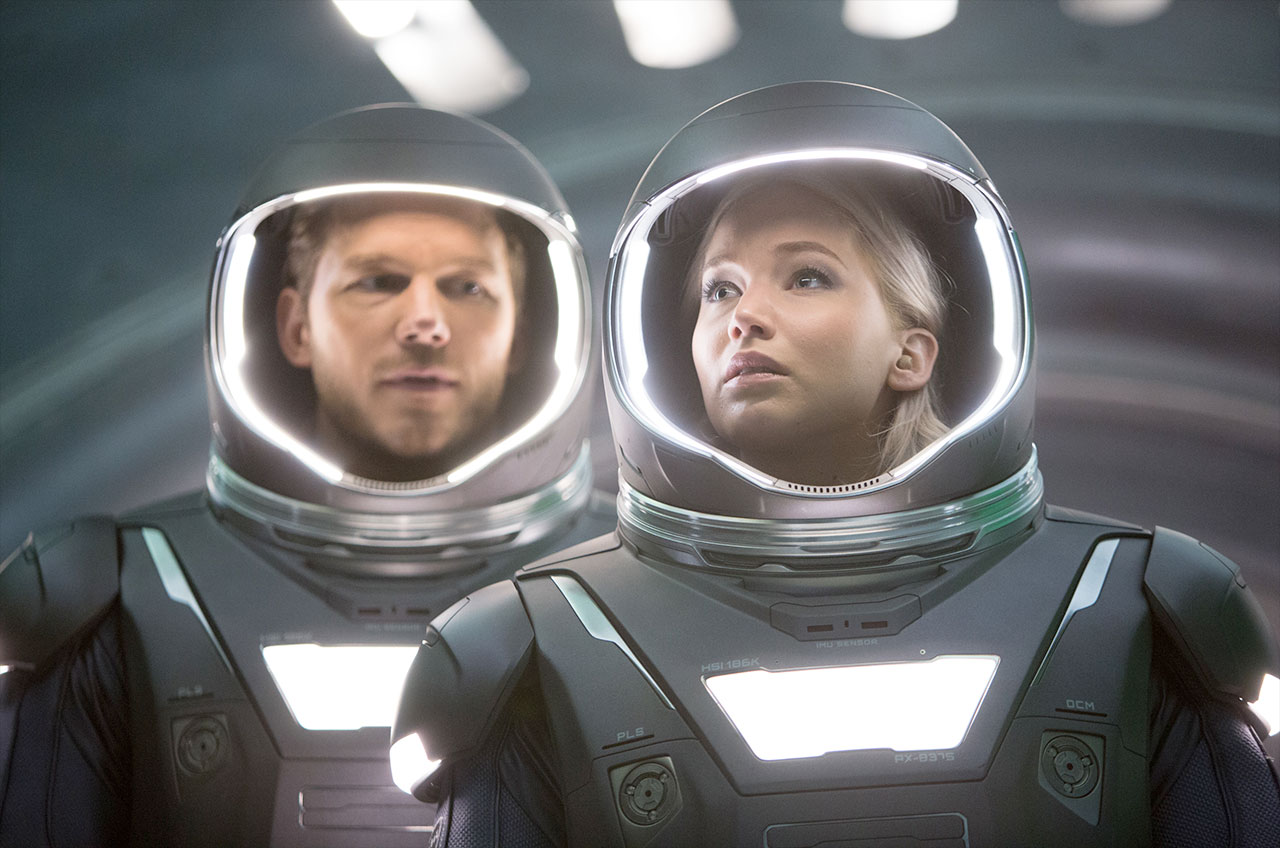Where 'Passengers' Future Meets NASA's Past; Director, Writer Describe

"Passengers," the new sci-fi movie starring Jennifer Lawrence and Chris Pratt, is set hundreds of years in the future aboard an interstellar spaceship, but it was inspired by a real astronaut's experience almost half a century in the past.
"Somebody asked me once who is the most lonely person in the history of the human race and it was probably one of the moon astronauts," Jon Spaihts, who wrote the original screenplay for "Passengers," which opened in theaters on Wednesday (Dec. 21), told reporters. "Like the person who has been farthest from the nearest human being in human history was Michael Collins, the [Apollo 11] astronaut in the command capsule orbiting the moon when the other two guys got to land."
Spaihts was fascinated by the vastness of space and "the fact it can produce a solitude, a solitary experience, faster than anything we can experience in our lives."
"When [Collins] was on the far side of the moon from [Neil Armstrong and Buzz Aldrin], he was farther away from the nearest human than any other person had ever been. And I thought, what if you took that distance and magnify it by many orders of magnitude?" Spaihts recalled. "I fell in love with the notion of a man stranded alone between the stars and where that story would take him."
As it happens in the film, where such circumstances would take a man – in this case, Pratt's "Jim Preston" – is on an unexpected journey after he and Aurora Lane (Lawrence) are prematurely stirred from hibernation on their way to an exoplanet circling a distant sun.
"The very nature of the journey that is being made — that requires a century or more to leap between stars — means that we must, out of necessity, be a number of centuries in the future," said Spaihts in an interview with collectSPACE.com. "So, NASA is rather ancient history for these people. But you do see some homages in the design of the spaceship, in that it has an industrial core probably many hundreds of years old and does have design cues that are, effectively, homages to NASA design."
When Spaihts originally conceived the Starship Avalon as the transport for 5,000 passengers to the colony planet of Homestead II, he imagined the spacecraft as more of an homage to a classic nautical vessel, containing the design cues of a grand cruise ship. Under director Morten Tyldum and production designer Guy Hendrix Dyas' direction, the ship's look became more grounded in real science.
Get the Space.com Newsletter
Breaking space news, the latest updates on rocket launches, skywatching events and more!

"[It's] more of a hard science ship," said Spaihts, "meaning it does not rely on artificial gravity and flat decks to govern its structure. It is a rotor, driven by an ion drive with a low constant thrust propulsion system. It is a very conceivable ship."
"The design of the ship was based on a lot of science, like the it rotates 51 meters (167 feet) a second, which creates one-g of centrifugal force of gravity," added Tyldum.
"I think it is every filmmaker's dream to be able to design a spaceship," Tyldum told collectSPACE.com. "Everybody knows about the Millennium Falcon, Enterprise, Nostromo... these legendary spaceships. It was fun to do the Avalon."
The influences of current space technologies did not stop however, with the look of the ship. It also extended to how Jim and Aurora interacted with it — especially when things do not go quite as planned.
In one key scene, teased in the movie's trailers, Aurora is in a swimming pool when the ship stops rotating, causing her — and the gallons of water surrounding her — to float up. Tyldum and Dyas researched how water reacts in the microgravity environment but had to extrapolate it further.
"That amount of water has never been in zero-g," Tyldum said. "Not only that, but it is water influenced by centrifugal force that is diminishing. So it is like the blade [of the ship] slows down and it pushes the water, so it was completely unique."
"We did a lot of research looking at fluids and water, how it behaves in zero-g, and then we used a computer program that recreated the effects of water in zero-g that has had a force put upon it in motion," he explained.
The challenges presented by the space environment are what helps to make compelling stories, Spaihts said.
"[Space] is the biggest canvas on which a story can unfold and it is the next frontier," he said. "It is also an incredibly difficult environment and therefore one that places difficult constraints on a story — and I think stories flourish under constraint."
"I think telling a tale in a difficult space is fertilizing and it also produces great narratives," said Spaihts. "The hostility of space and the difficulty of crossing the interstellar gulf, combined with the infinite possibilities, has always exerted a fascination.”
Watch Jennifer Lawrence swim in a zero-g water pool in a clip from the film “Passengers” at collectSPACE.
Follow collectSPACE.com on Facebook and on Twitter at @collectSPACE. Copyright 2016 collectSPACE.com. All rights reserved.
Join our Space Forums to keep talking space on the latest missions, night sky and more! And if you have a news tip, correction or comment, let us know at: community@space.com.

Robert Pearlman is a space historian, journalist and the founder and editor of collectSPACE.com, a daily news publication and community devoted to space history with a particular focus on how and where space exploration intersects with pop culture. Pearlman is also a contributing writer for Space.com and co-author of "Space Stations: The Art, Science, and Reality of Working in Space” published by Smithsonian Books in 2018.In 2009, he was inducted into the U.S. Space Camp Hall of Fame in Huntsville, Alabama. In 2021, he was honored by the American Astronautical Society with the Ordway Award for Sustained Excellence in Spaceflight History. In 2023, the National Space Club Florida Committee recognized Pearlman with the Kolcum News and Communications Award for excellence in telling the space story along the Space Coast and throughout the world.










